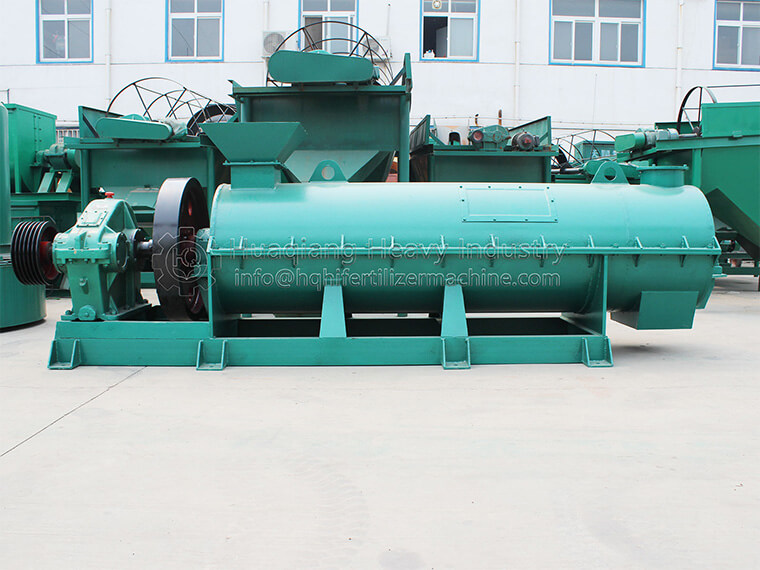Which Organic Fertilizer Pelletizer to Choose for Biological Manure Processing Fertilizer
Bio-organic fertilizer equipment has always been the star product of our factory. There are many production processes for producing bio-organic fertilizer, and each production process has its own characteristics. The key to the production process of biofertilizer project is the choice of granulation method. According to the production process requirements, the current granulation methods commonly used in bio-organic fertilizer are mainly disc granulation and stirring granulation. Due to different requirements of raw materials for different granulation methods, there are differences in the production process of biological organic fertilizer. At present, our organic fertilizer equipment has the following production processes.
Using the disk granulation production process, the raw materials need to be dried to remove a certain amount of water (when drying, the raw materials are sterilized), and then crushed, and then a certain amount of acid and alkali is added to adjust the PH of the carrier and mixed with the inorganic fertilizer part, and sent into The disc granulator sprays a certain amount of bacteria during the granulation process, and the granulated product is dried and sieved at low temperature to obtain the finished product.
The tooth-granulation granulation process is to use the high-speed rotating mechanical stirring force and the aerodynamic force generated thereby to continuously realize the process of mixing, granulating, spheroidizing and densifying the fine powder in the machine, thereby achieving the purpose of granulation. The shape of the particles is spherical, the sphericity is ≥0.7, the particle size is generally between 0.3-3 mm, and the granulation rate is ≥90%. The size of the particle diameter can be appropriately adjusted by the material mixing amount and the spindle speed. Generally, the lower the mixing amount, the rotation speed the higher, the smaller the particles, and vice versa.
From the process flow, the two processes have the same equipment before granulation and the area is about the same, so the difference in investment mainly depends on the fertilizer granulator machine. The same is the case of a 10,000 t / a scale production capacity. 4000 ~ 5000 yuan / set, while the stirring granulator is generally 50,000 yuan / set (the specific price is determined by the specific specifications and the manufacturer’s price is for reference only), and the low temperature dryer is 12-15 thousand yuan / set. Therefore, from the perspective of investment, the disc granulation production process is relatively higher than the extrusion granulation process, and the specific production process needs to be tailored by a professional technical team.

.jpg)
.jpg)





